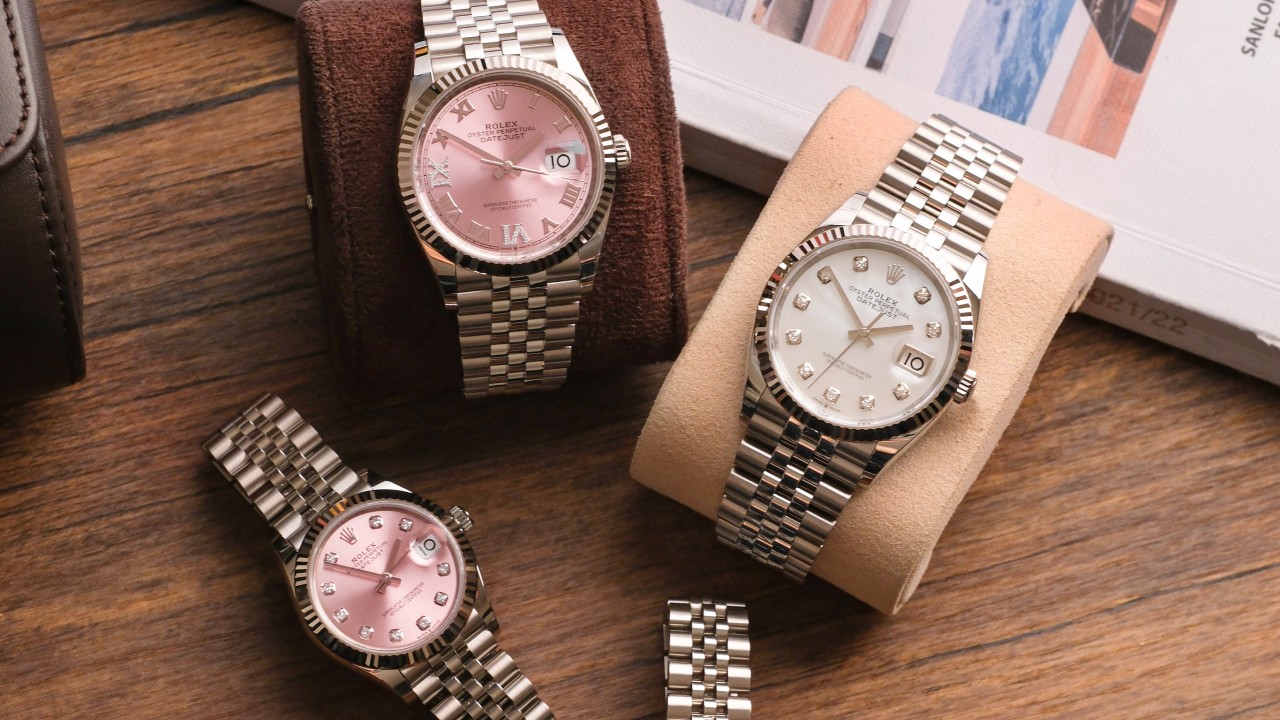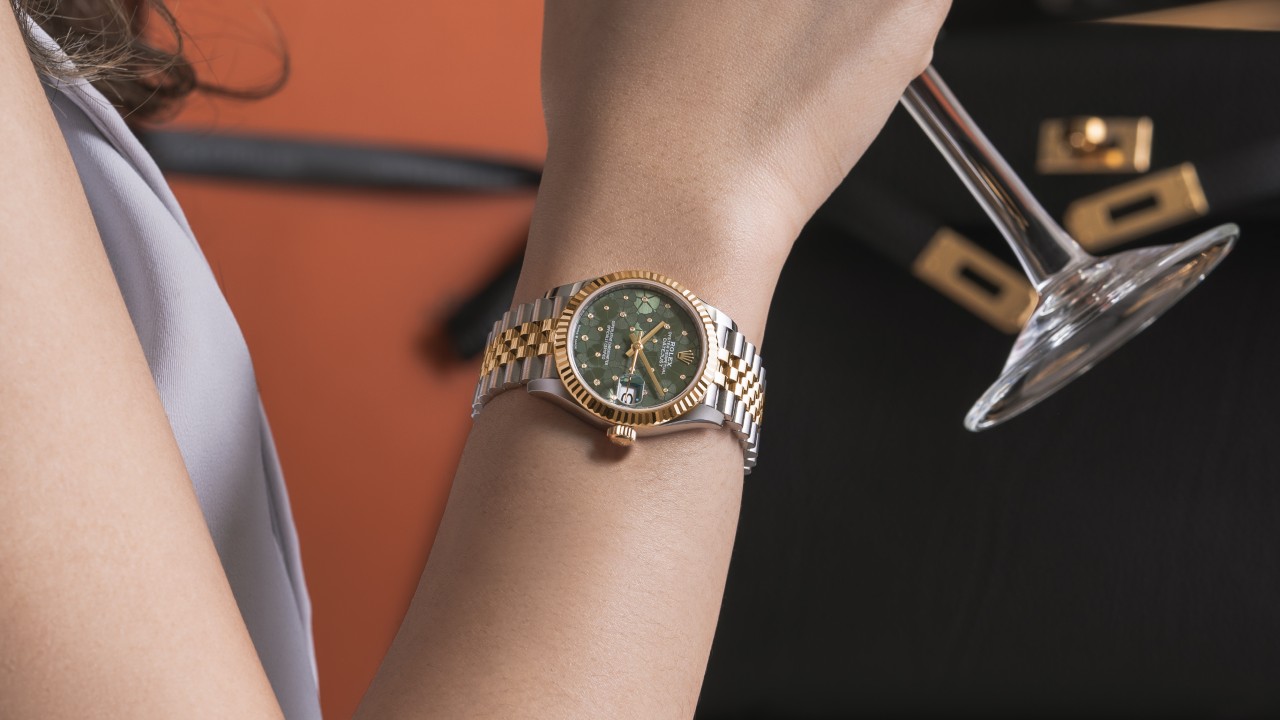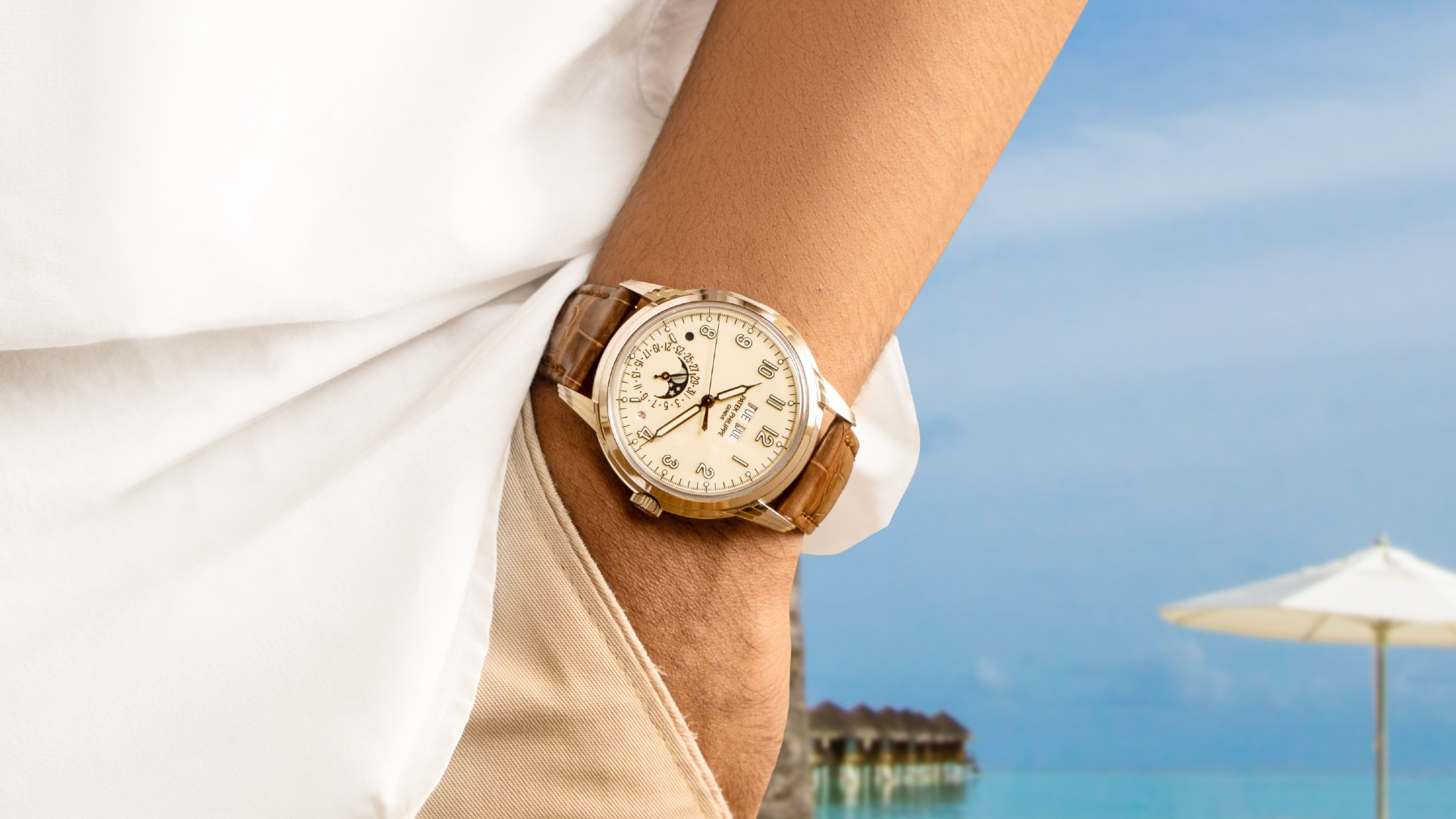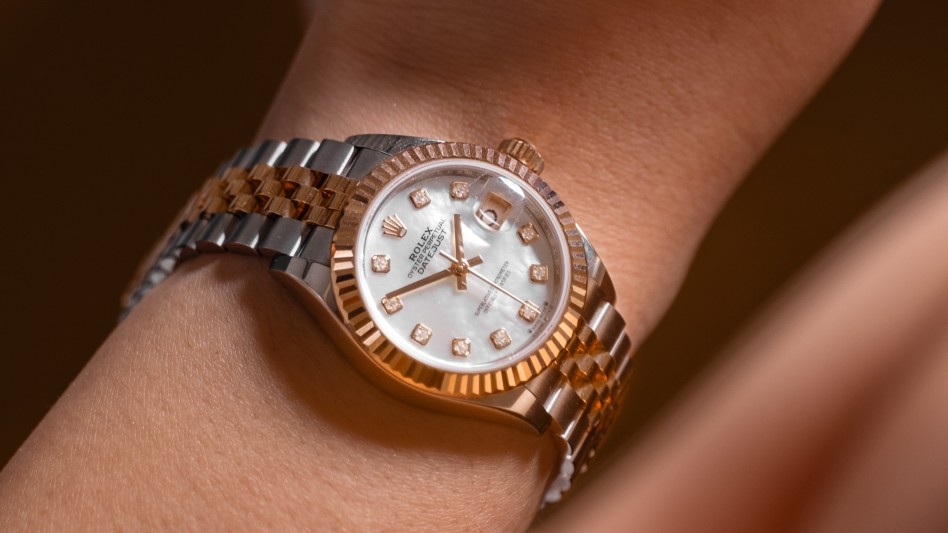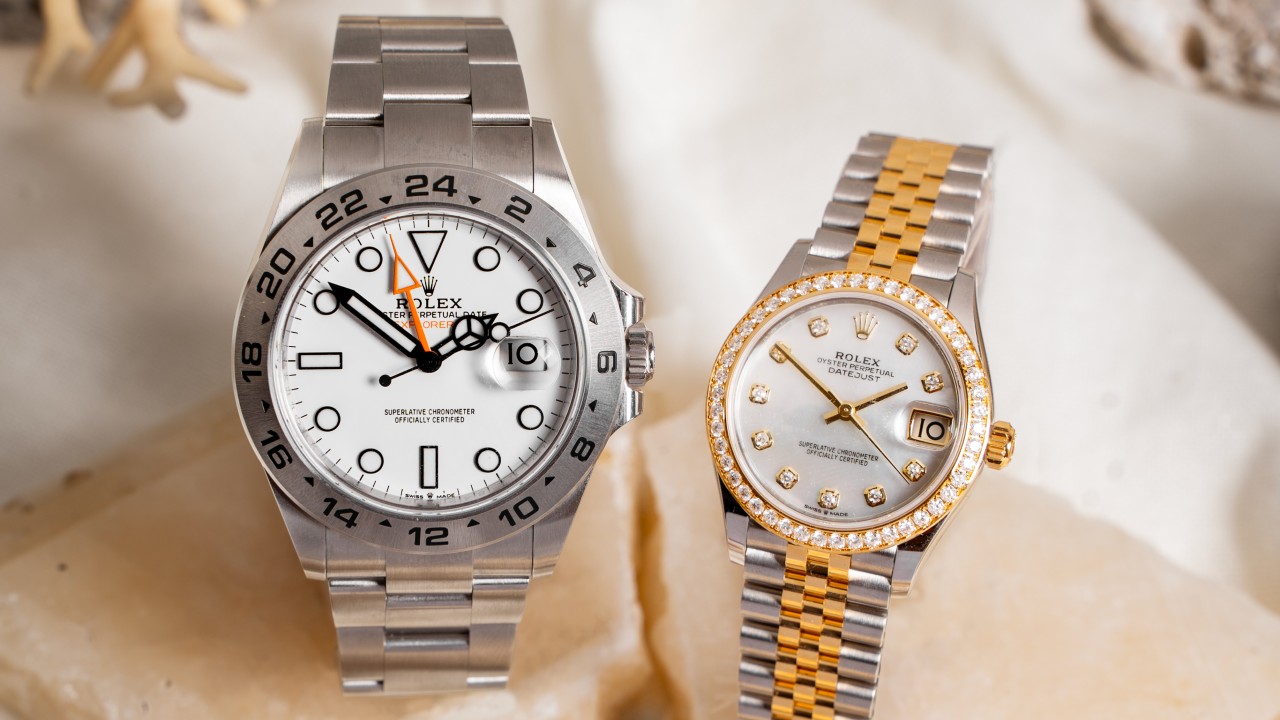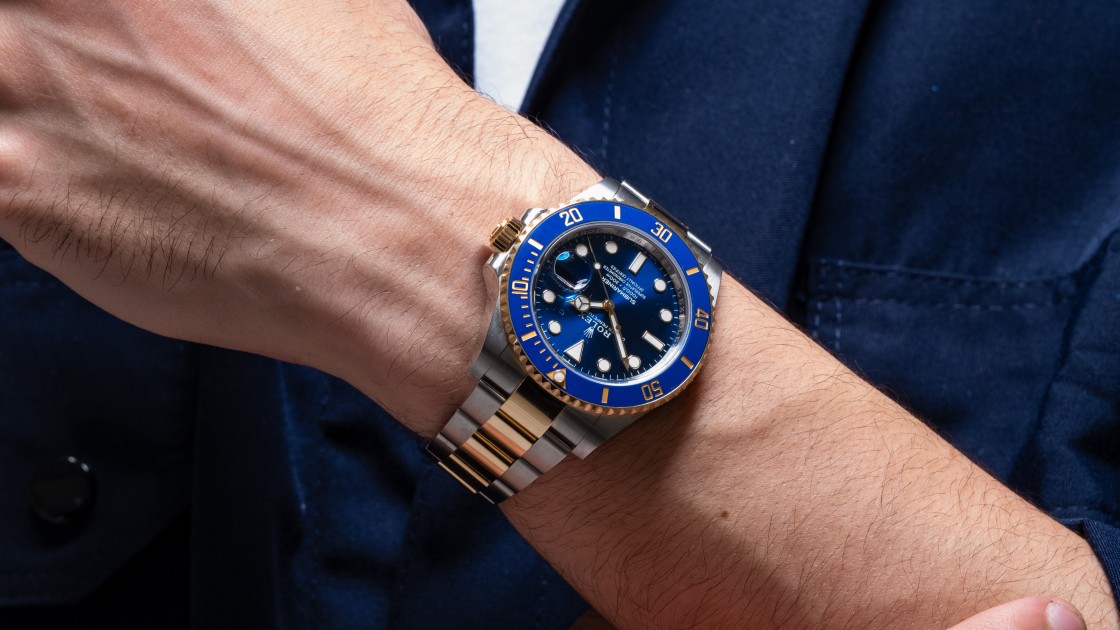Luxury watch brands often unveil exclusive collections tailored to male or female consumers. But what exactly is the difference between men’s and women’s watches?
While distinctions exist between men’s and women’s watches, personal preference is more important. There’s no need to confine yourself to traditional gender norms when selecting timepieces. Let’s delve deeper into this topic!
The Differences Between Men’s and Women’s Watches
While many watches are considered unisex, luxury watch brands often imbue their creations with distinct characteristics tailored to male or female wearers. Below are some key differences between men’s and women’s watches:
1. Different case size
Women’s watches tend to feature smaller case sizes and narrower straps, catering to the typically smaller wrists of female wearers. On the contrary, men’s watches often boast larger case diameters and broader straps, reflecting a more robust aesthetic.
Women’s watches range between 26 mm and 36 mm, while men’s watches range between 38 mm and 46 mm.
However, you must consider body type when selecting a watch, as it can significantly impact the timepiece’s appearance.
For instance, while men’s watches typically feature larger cases, they may not complement an individual’s wrist with a slender and streamlined build. Some men may find smaller-dial watches more flattering, enhancing their overall appearance.
Similarly, women can exude elegance and confidence wearing larger timepieces despite the conventional association of smaller sizes with femininity. Ultimately, the key lies in finding a watch that harmonizes with one’s physique and personal style.
2. Different color palette
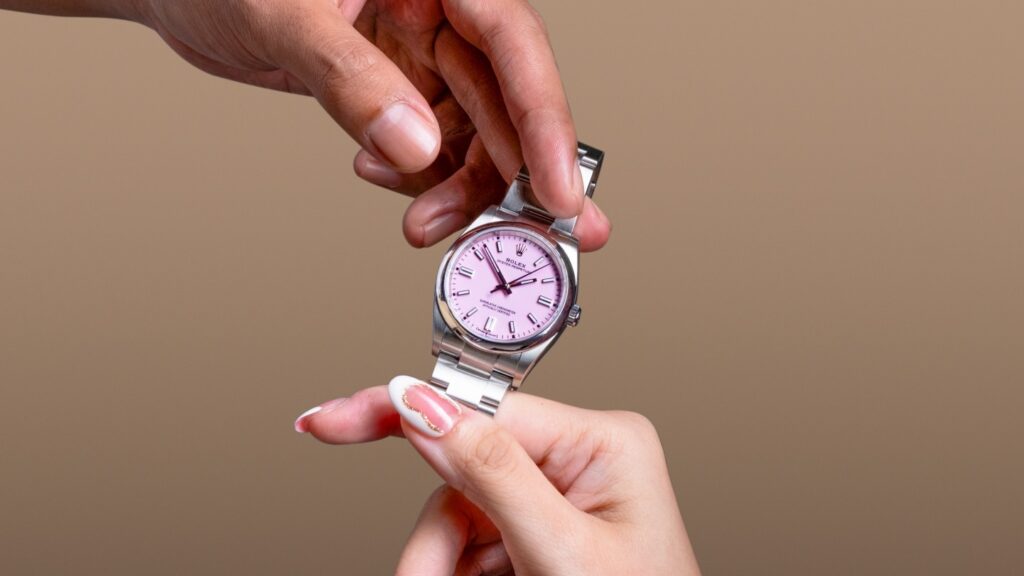
Besides the case size, the difference between men’s and women’s watches can usually be found in their color.
Women’s timepieces often offer various colors, from pastels to vibrant hues and metallic finishes, catering to diverse fashion tastes. In contrast, men’s watches typically feature darker tones, earthy shades, and metallic accents, evoking a sense of understated elegance.
However, it’s crucial not to limit color choices based solely on gender norms. The selection of watch colors should align with the occasion and outfit.
For formal settings like business meetings or funerals, neutral and darker shades are more appropriate, but this doesn’t restrict them solely to men’s watches.
Similarly, embracing brighter colors is not exclusive to women. Men can confidently wear vibrant hues, especially when attending lively events or parties, adding a touch of vibrancy to their ensemble.
3. Different designs and features
Women’s watches often incorporate design elements such as gemstone embellishments, intricate detailing, and softer, more curved contours, reflecting a more elegant and feminine aesthetic.
In contrast, men’s watches may feature bold, angular designs and functional complications, projecting a more rugged and masculine vibe. They also often include complex complications such as chronographs, moon phases, and dual time zones.
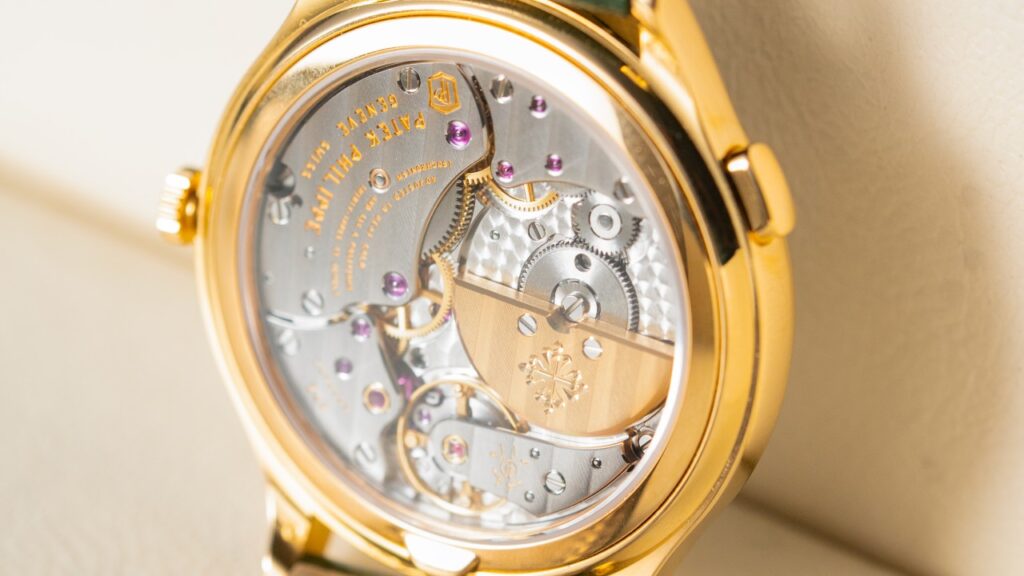
However, the appreciation for complicated or technically advanced watches extends beyond gender boundaries. Many female collectors gravitate towards timepieces with intricate features and functionalities. Thus, watches with many features aren’t exclusively reserved for male wearers.
While men’s watches often showcase bold, angular designs and functional complications, exuding a rugged and masculine aura, preferences vary widely among individuals, with some men opting for more straightforward, traditional-looking watches, appreciating their understated elegance and timeless appeal.
Unisex Watch Recommendations for Male and Female Collectors
Curious about unisex watches suitable for both men and women, regardless of traditional gender norms? Discover our recommended list in our video!
Are Watches Gender Specific?
While luxury brands typically unveil special collections geared towards specific genders, this doesn’t imply exclusivity based on gender.
Generally, women’s watches feature smaller faces, catering to petite wrists, and exhibit designs often associated with femininity and jewelry-like aesthetics. Meanwhile, men’s watches often boast larger case sizes and a bolder, sportier appearance.
Watch collecting is commonly perceived as a male-dominated pursuit, leading to the belief that customized or limited-edition timepieces are inherently masculine. However, this idea is groundless, as women can share the same preferences for timepieces as men.
In reality, watch selection is flexible. Women can confidently don larger timepieces, while men can opt for smaller dials without compromising style.
Moreover, many watches are marketed towards women or considered unisex, and their features are robust, masculine designs suitable for any wearer.

In essence, watches transcend gender boundaries. Personal taste and style preferences should guide wrist adornment choices, allowing individuals to curate their collections freely.
Watches transcend gender boundaries. Whether you’re seeking timepieces for men, women, or unisex options, Luxehouze has you covered.
Explore Luxehouze’s extensive collection of luxury watches, all guaranteed to be 100% authentic and available at the best prices. Visit Luxehouze website to view the full range or stop by the Luxehouze Boutiques in Jakarta, Surabaya, or Singapore today!


